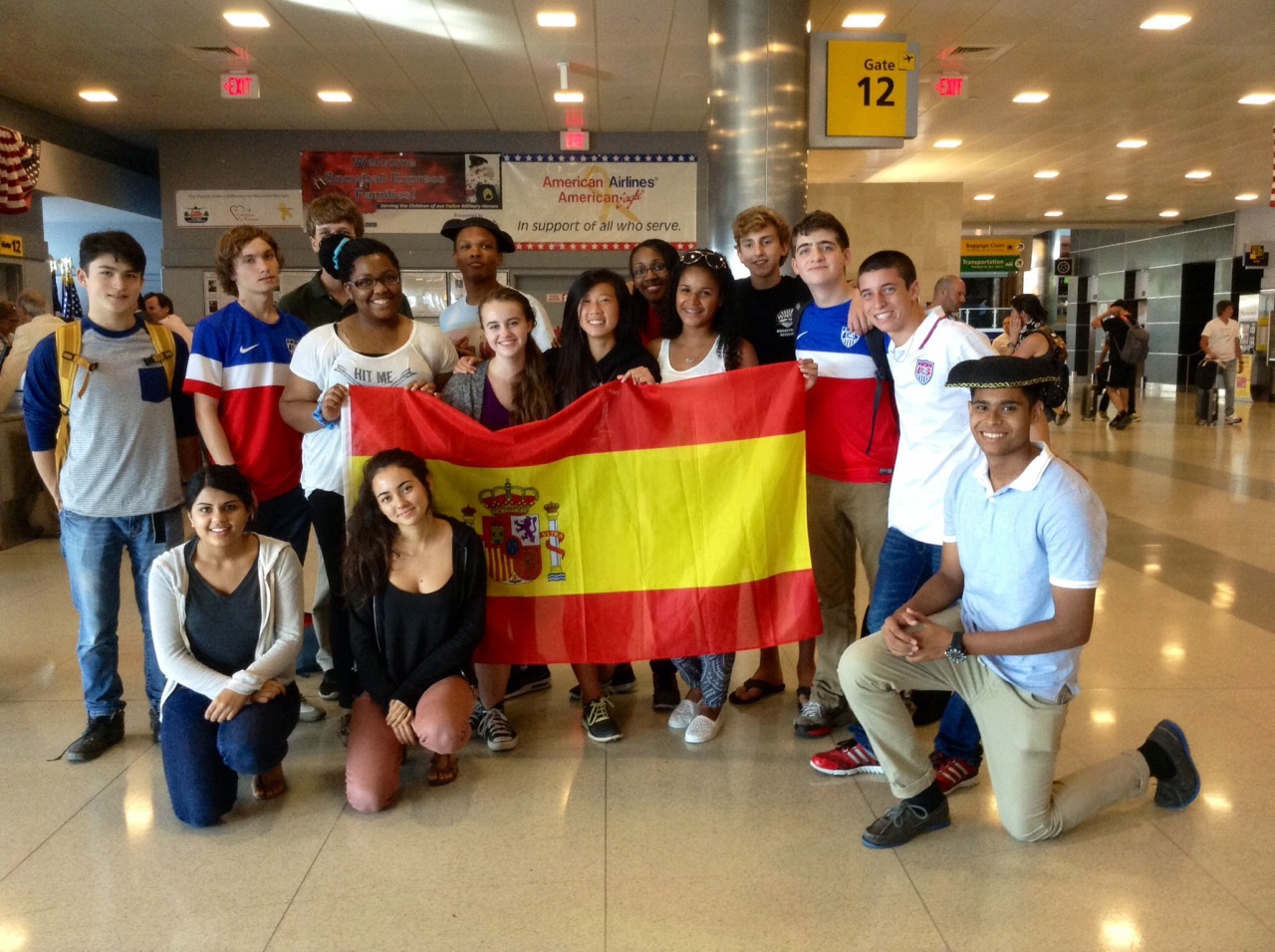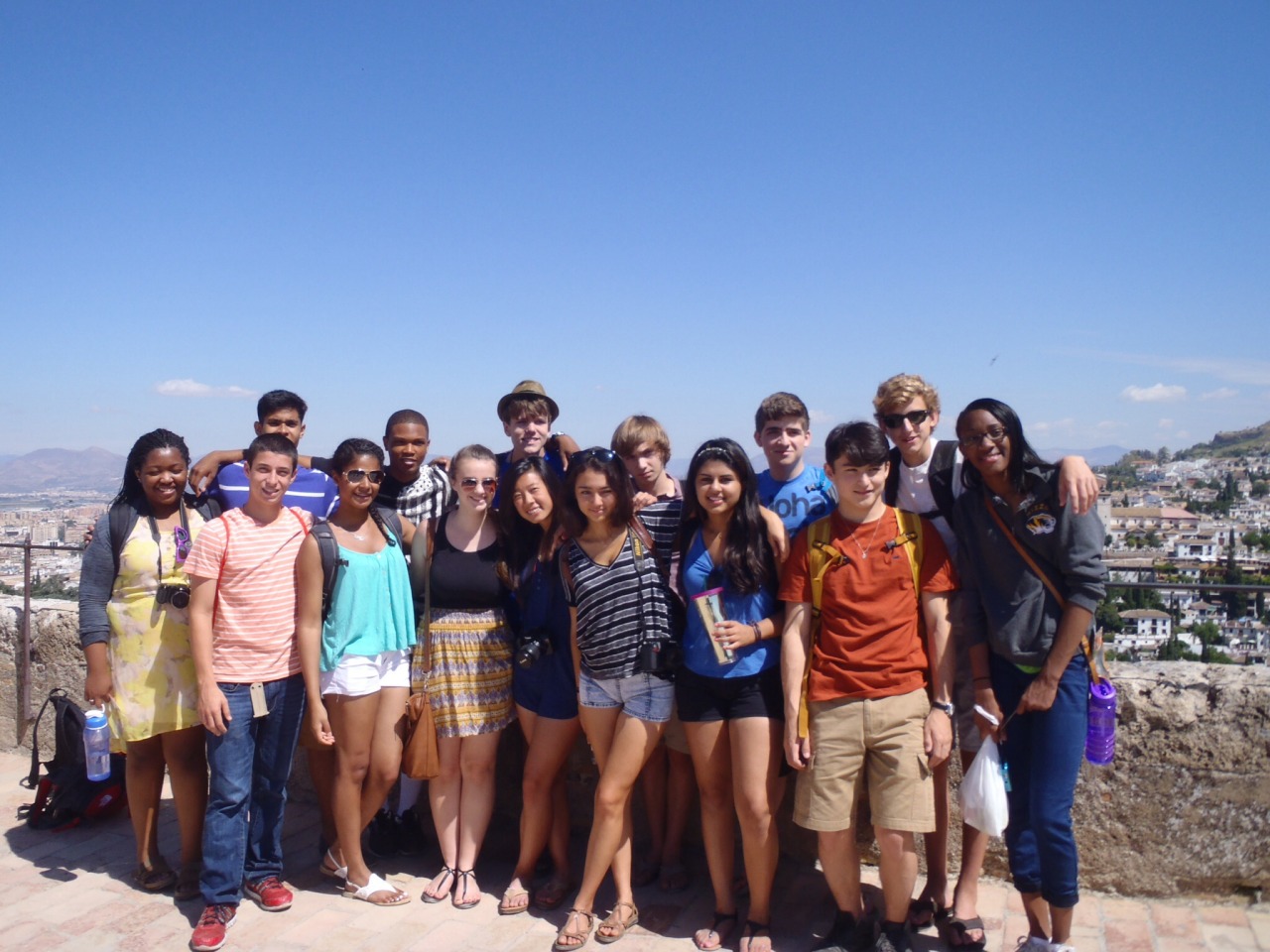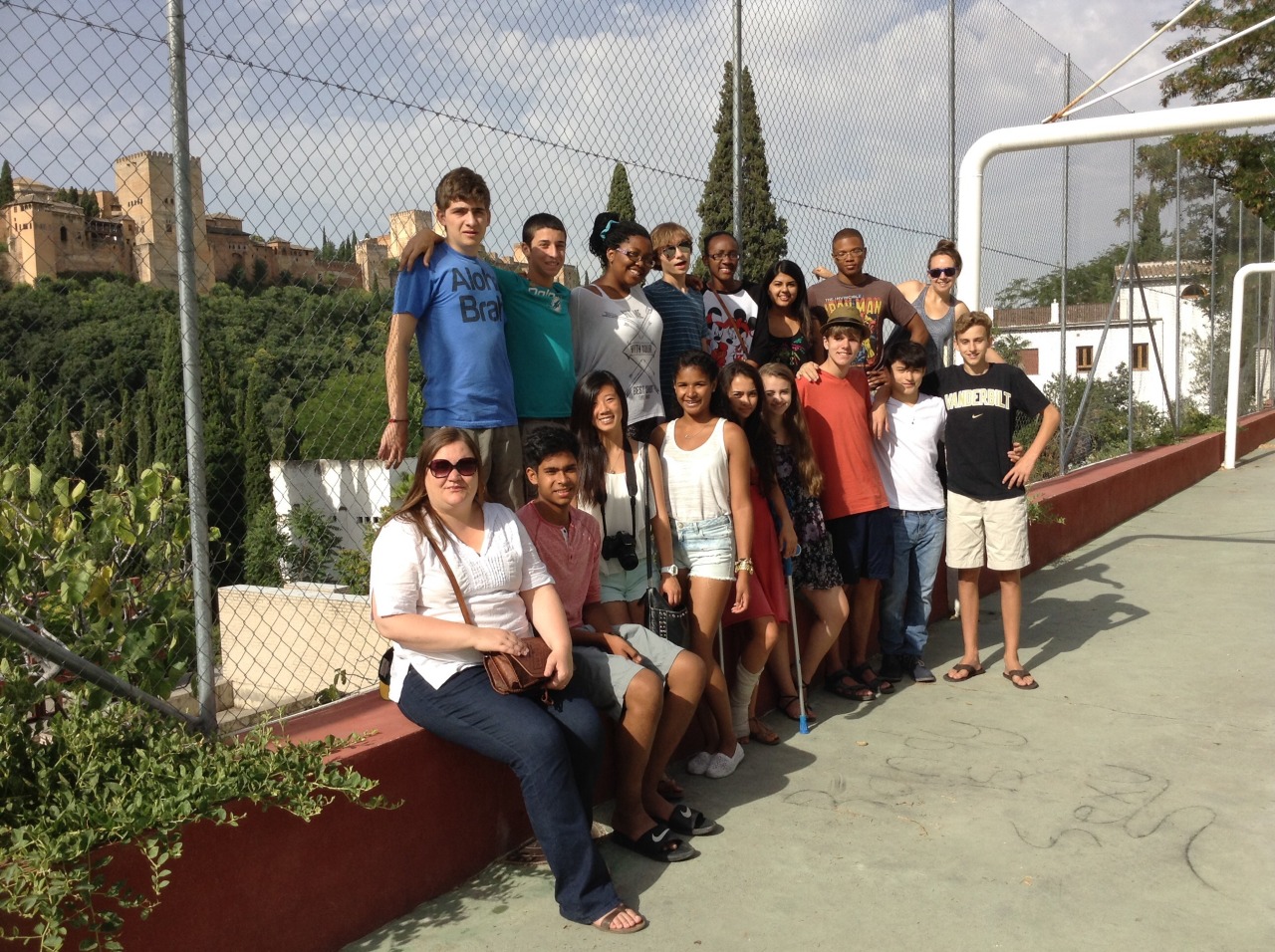It started as a very exciting morning as I awoke early on the morning of July 5th. I remember not even being tired despite my previous long night of July 4th. We packed the car and rushed to the airport to meet up with the Deutsch family who was waiting on us. After we arrived we quickly said our goodbyes and hurried on through security and finally found our flight, for which we were an hour early. All of the excitement quickly came to a halt once we found ourselves making countdowns to our flight. It was all building up to our arrival in Germany, a place I had never had the chance to go, a place I had only ever heard about or seen in textbooks and on TV.
 |
| Our Plane in NYC |
After a short flight from Nashville to New York, we walked over to our terminal and found our flight in a timely manner. After a 6 hour layover, we boarded, and I fell asleep almost instantly. I woke up 7 hours later to the voice of our German pilot informing us of our proximity to Germany. When our wheels scraped the ground, I got goosebumps as I began thinking about my location on a globe. We got off the plane and walked through customs and got our luggage. Then, we walked our the exit and found our families waiting for us with big signs with our names on them. I said a quick hello to my host brother Marc, whom I met when he came on exchange to Nashville and stayed with my family, and then I greeted the rest of the family.
The family took me in as their own child and I built a relationship with them that I know will last a long time as they travel to America and I to Germany. When we first walked in their house, they took my bags and offered to unpack them and gave me a grand tour of their beautiful house. They gave me a lot of time to unpack and get used to things, and then towards dinner time we went to a wine festival where we ate dinner, and I met my host sister, Selina. Selina was easily the best English speaker in their house, probably because she was a senior in high school and is very dedicated to her studies. During the wine festival, I remember almost falling asleep standing up because I was so tired from the jetlag.
The first week was easily my hardest week, as I had to deal with getting back into German, adjust to the cultural differences, recover from my jetlag, and meet new people. It was not my favorite week, but it was a memorable one, because I made some life long friends. Starting with the first Monday, we arrived at school and I met the AATG group and chaperone. They were all great people with their own advantages and disadvantages. I also got to see Billy again after we were separated the previous day at the airport. After the first lesson, Billy and I realized we were the best German speakers in the group. Every weekday was laid out similarly for our group. We had a 3 hour German class with just our group in the morning and then lunch. After lunch we would find our host partners and then go to their afternoon classes with them. German schools were very different from MBA. They had different schedules everyday that were composed of 8 classes each lasting 45 minutes and 3 breaks between classes. This took time to get used to, and I never really understood their Biology class, but I liked the Germans' method of teaching better than my own. In Germany they can learn one subject for three years which forces them to remember it for a lot longer, whereas we only learn it for one year, and it is often forgotten after that one year is over.
 |
| Heidelberg |
On the Saturday that week, we made a trip to Heidelberg, which was my favorite traditional city in Germany. My mom studied there in college and she told me it was pretty, but I had no idea it would be how it was. Full of old gothic architecture and topped off by a beautiful castle sitting on top of the hill overlooking the city, it was hard not to love it! We walked through the town and toured the castle. I took a picture of the world largest keg which held over 120,000 liters. We got back late that night and went to dinner where I had Currywurst which was amazing. That topped off my first week as the highlight of my first week.
 |
| Billy and I at the Berlin Wall |
The next week began on Sunday night as we went to a small party to watch the world cup final which was absolutely amazing. Germany won in overtime to beat Argentina 1-0. I never knew I would love soccer as much as I did there. After a long night we woke up early the next morning and went through a normal day of school on Monday, and then early Tuesday morning we boarded a train headed to Berlin. We arrived in Berlin around 1 p.m. and walked to our Jugendherberge (youth hostel), which was just outside the city. We then took a bus to Berlin and went sightseeing. We saw the Reichstag, a Jewish monument, and the Brandenburger gate. The rest of the week was a blast. We went to countless museums and what seemed like almost every restaurant in the city. I made a lot of friends while I was in Berlin, and I am still in touch with them. We stayed in Berlin for only 4 days, but it was easily my overall favorite city in Germany. I loved using public transportation, because it was so convenient, and by the end of the week I was able to navigate Berlin by myself. Seeing things like the Berlin wall, Checkpoint Charlie, and the Brandenburger Tor was thrilling. They were things I had only ever read about in a classroom.
We returned on Saturday that week to cap off my favorite week of the trip. The third week was a lot of fun full of soccer, Döner (a Turkish/German type of street food), and trips. On Monday we played a soccer tournament whereI played midfielder and had a lot of fun. After the tournament, we went to go get my favorite food in the world, Döner Kebab. The next day we went to tour Wiesbaden which is where the school was. Wiesbaden is a very small and pretty city. Wednesday we went to Mainz which is also a small and compact city not far from Wiesbaden. Thursday and Friday we returned to normal days of classes to finish off the German school year. Friday was a sad day as I had to say goodbye to all of my friends, old and new ones. Then on Saturday morning, too, as I said goodbye to my wonderful family and my best friend Marc. We then loaded up the car for one last hoorah.
 |
| Neuschwanstein Castle |
The last week was easily the busiest week. We were never not moving. It started with a long car ride with Billy, Dr. Boyd, Herr Dougherty, and Herr Dougherty's daughter Juliana. We were headed to down south to Munich. However, first we stopped in Rothenburg for lunch, and a brief museum visit. After it started raining we headed for the car and for Munich. We arrived in the afternoon and checked into the hostel. We then began to tour the city with our navigator Herr Dougherty and our history teacher Dr. Boyd. We got dinner that night at a beer garden where I had an awesome meal of many different kinds of wurst. The next several days were similar to the first. We saw Neuschwanzstein castle which was beautiful. We also saw Dachau and Allianz arena. We then traveled to Nürnburg which was a tiny but pretty city northwest of Munich. We spent a couple of days there as we got to see all of the German architecture. Then on Friday we headed North for Frankfurt where our plane was leaving the next day. It was a great ending week to a great trip.
 |
| Billy and I at the Brandenburger Gate |
I had the time of my life in Germany. It was truly a once in a life time experience that I am so blessed to have the opportunity to have. Having been to Germany, I know I want to go back one day. This trip enhanced not only my language skills, but also my knowledge of the culture. It made my classroom experience more meaningful because I have a new kind of respect for German as a whole. I would like to take this time to thank the Wilson family for their generous donations to the school, and allowing me to have had the experience I had.





























